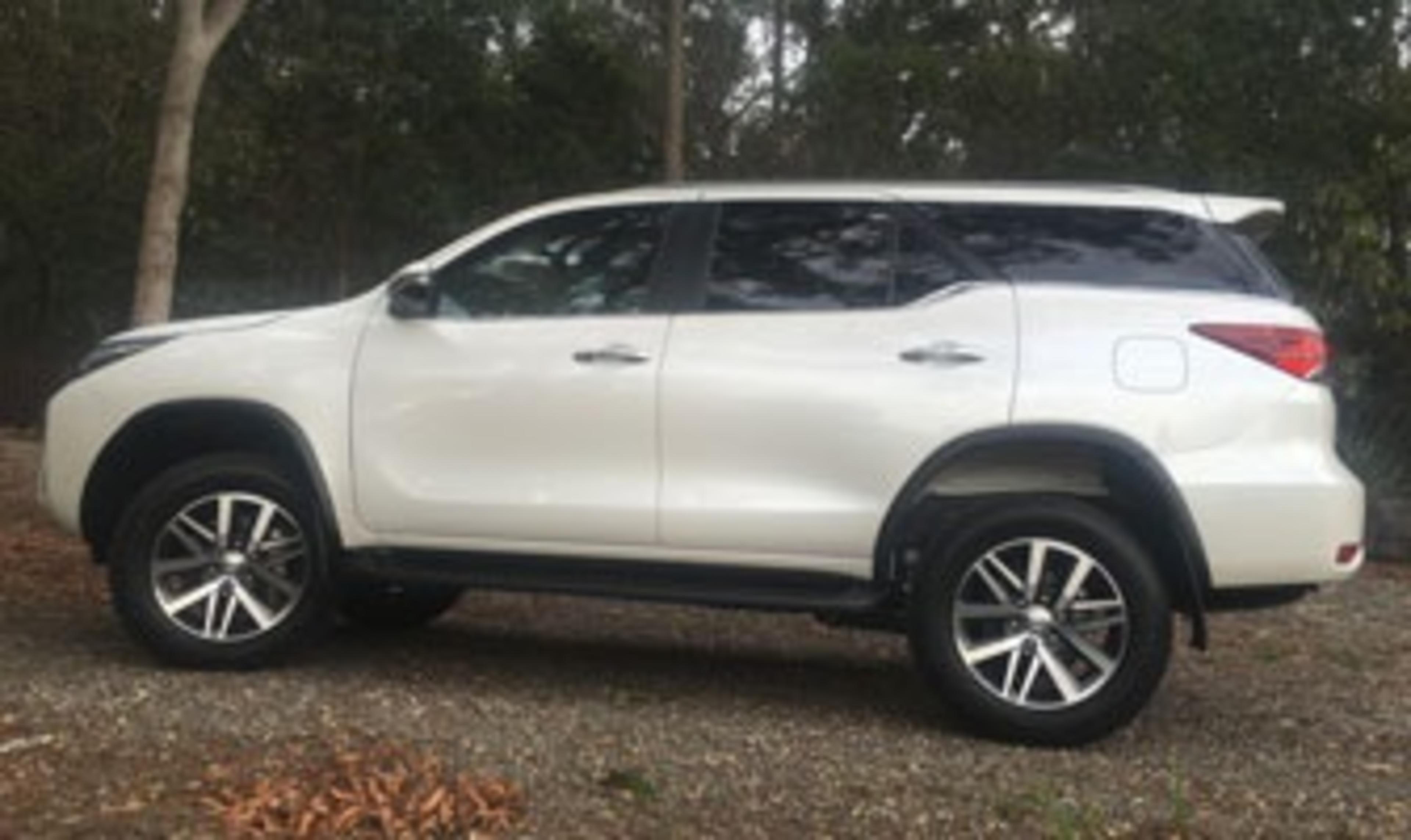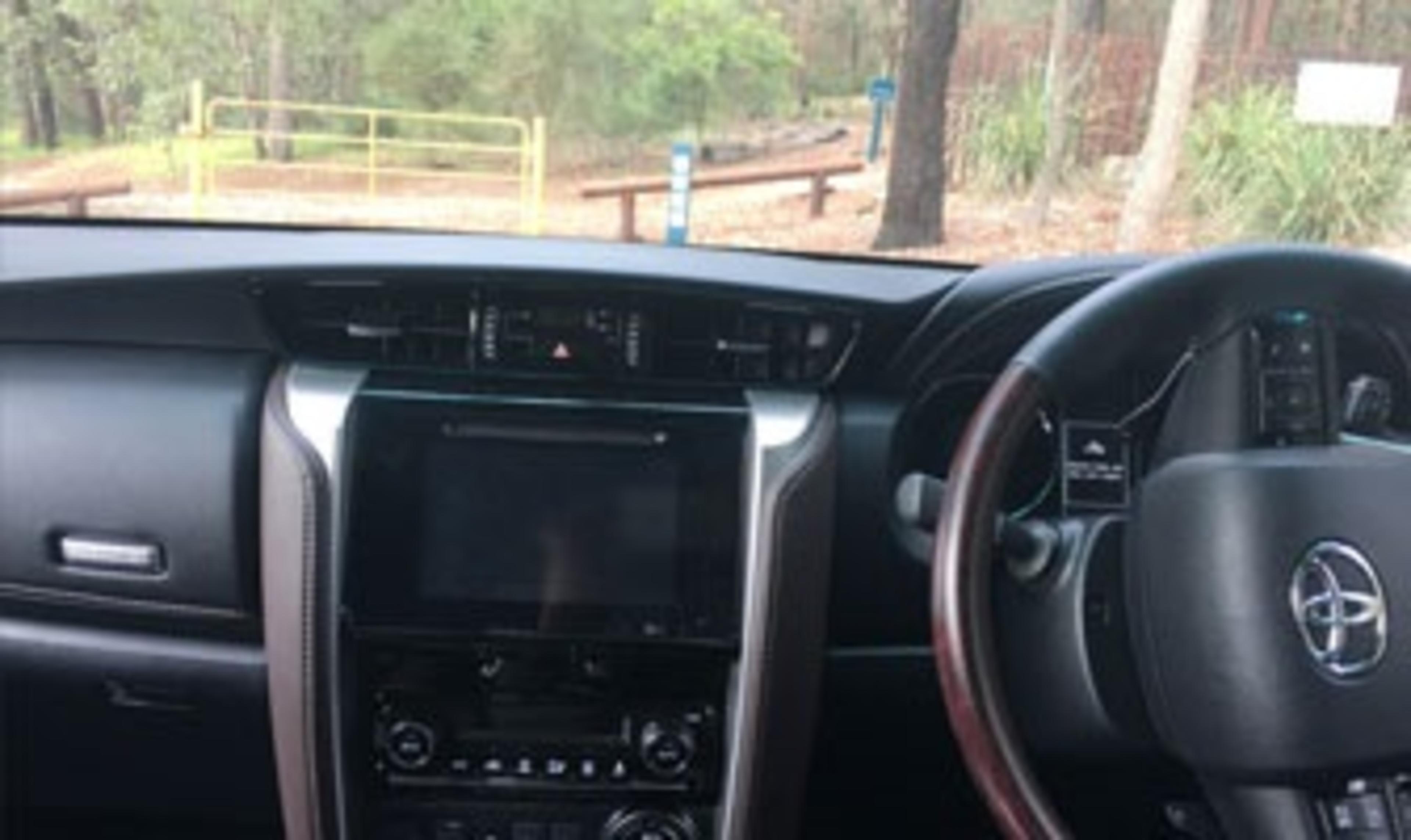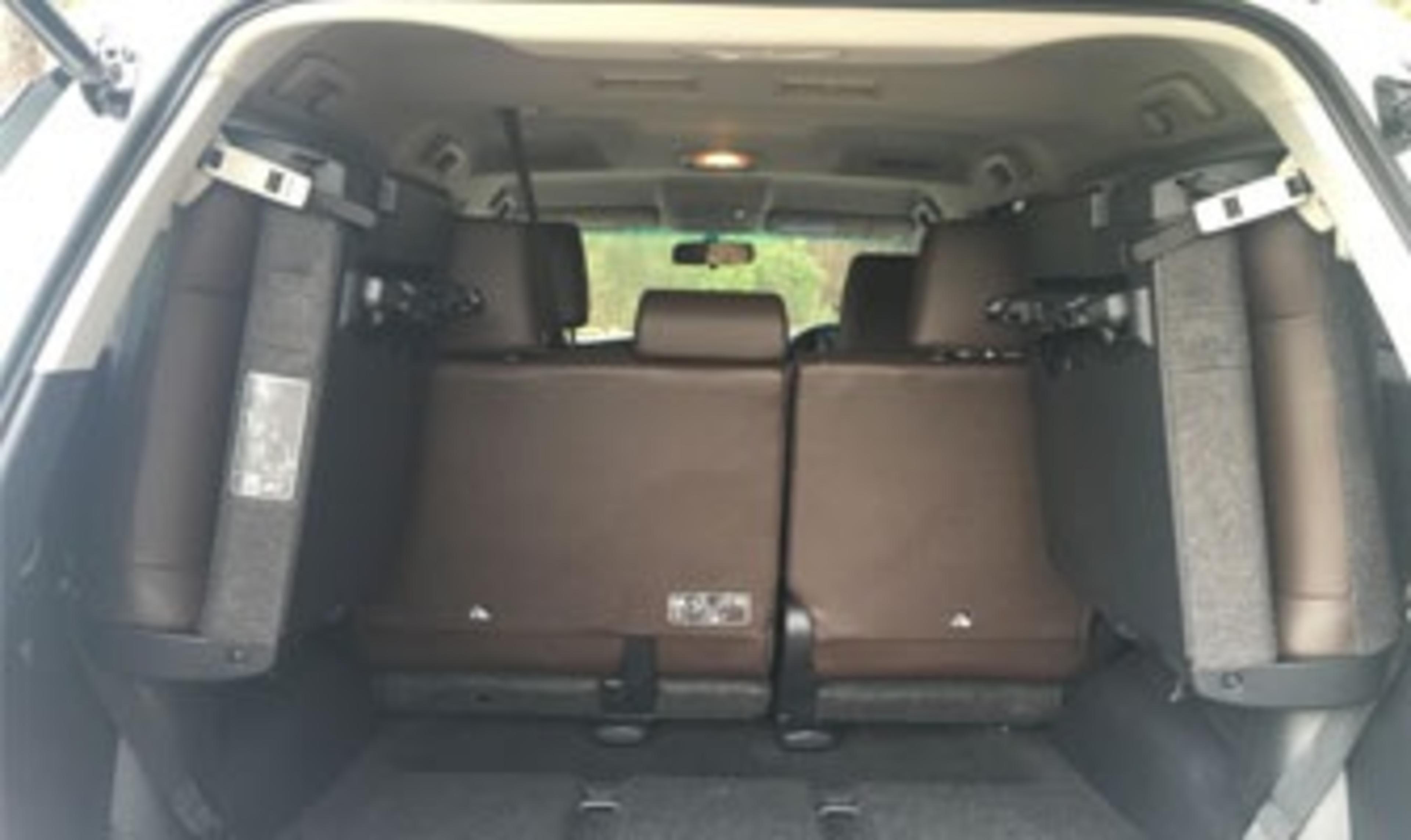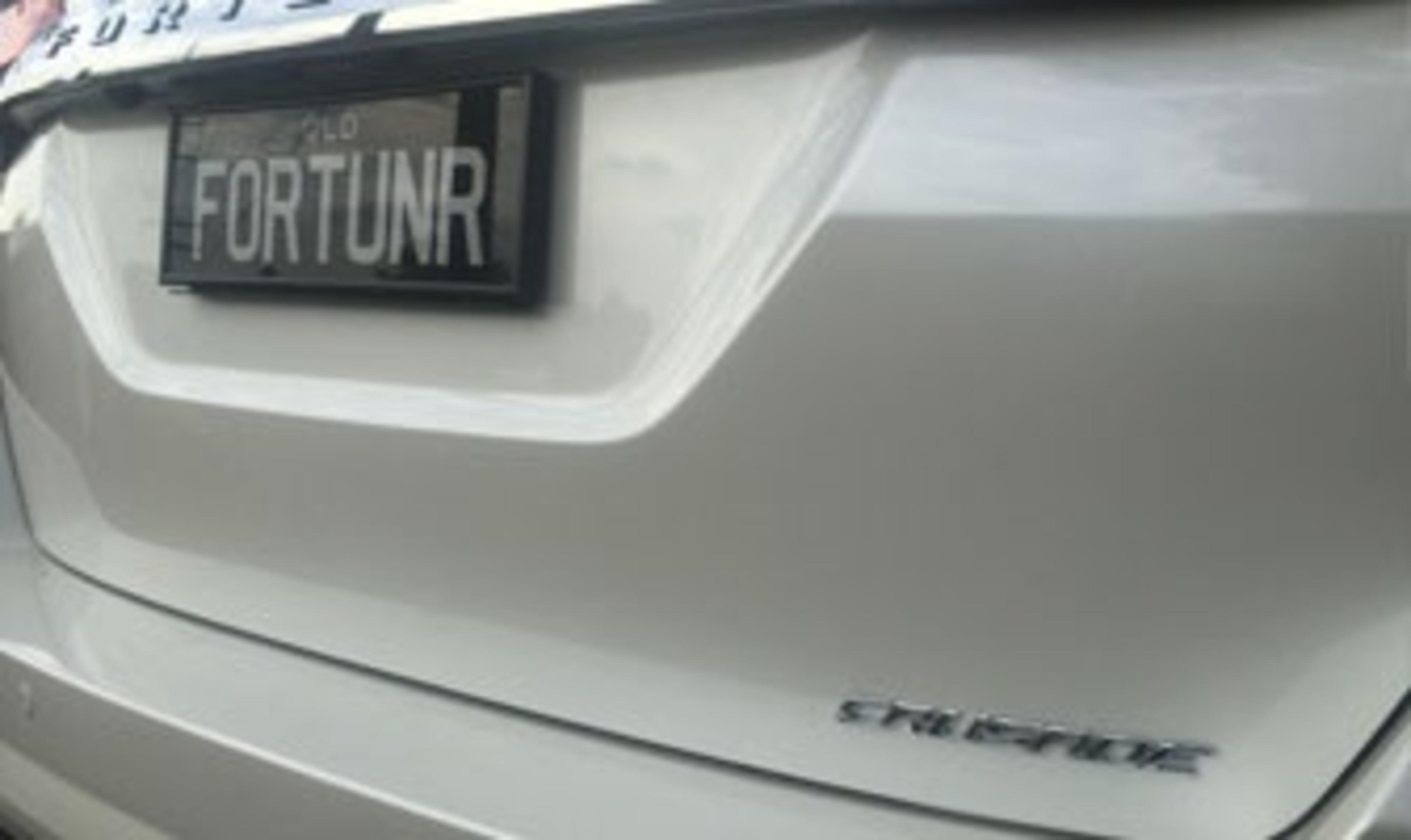
Review | 2015+ Fortuner Crusade
Posted in Vehicle Reviews
Review | 2015+ Fortuner Crusade
The Toyota Fortuner follows the new Hilux into Australia and, although it’s based on the unbreakable bestseller, the new seven seater promises a family off-roader that is capable and comfortable. We took the top-spec Fortuner Crusade out for a drive.
SUVs are the on-trend item at the car dealership, with buyers avoiding station wagons in favour of the image and space (perceived or otherwise) that high riding crossovers can bring to their driveway.
Legitimate off-roaders are now mixed in with vehicles that look the part, but have no serious credentials when the going gets really rough. In the stables at Toyota, the Landcruiser and Hilux have largely filled the duty of serious four-wheel driving. The Kluger and RAV4 offer All Wheel Drive variants, but are really best left on the roads, due to a lack of complementary technology and features such as Crawl Control or lockable differentials.
But, if you needed something with the capacity and versatility of a Kluger and yet the budget couldn’t stretch to accommodate a Prado or Landcruiser 200 – you were left without any options. Thankfully, the Fortuner has arrived.
Initial Impression
Based on the all-new Hilux, the Fortuner isn’t a shock to anyone who has seen that on the road or in the dealership. The shape resembles the Hilux, but in place of a tray, the cabin extends to accommodate the third row of seating with wraparound glass to create a distinct, and fairly appealing look for the Fortuner.
Spiritually, the Fortuner is a successor to the Hilux Surf and the 4Runner of years gone by, but where they were directly based on the Hilux of the day and fairly uncivilised, Toyota Australia’s engineers have worked to make the Fortuner stand out from its commercial origins.
Inside, the Fortuner is laid out similarly to the Hilux, however the way it’s finished leans more to indulge passengers, who won’t necessarily be doing the hard yakka that a Hilux driver and their crew might be. Leather seats are standard on the Crusade, available in Fawn (tan) or Dark Brown leather – with Dark Brown fabric on the GX and GXL grades. The Fawn leather will divide opinions; you’ll either love it or hate it, but it’s a shame that there aren’t many options when it comes to interior customisation.

Driveability

The 2.8-litre turbo-diesel comes out of the Hilux, but has been rejigged by Toyota’s engineers just for the Fortuner. Paired to either a six-speed manual or automatic, it’s smooth in operation on the road, and the delivery of power is well matched to the Fortuner's gearbox, and keeps it plugging along with a 2.1-tonne Toyota behind it, and even with a full suite of passengers on board, the low-down torque comes in handy to pull the entire crew.
2WD is well planted, with power delivery through the front wheels never giving way to any uneasy body roll or skittishness when on the tarmac. Switching into 4WD is done electronically, and high-range gearing gives you that added traction and will suit most off-road conditions, however getting into the really rough stuff will require the low-range gearing to let you crawl through sticky situations.
The steering has a nice weight to it, and the Fortuner is easily controlled, with no wandering or corrections no matter when driving through two- or four-wheels. The paddle shifters for the automatic really don’t add that much to the driving experience, and the manual doesn’t get them as an option so they’re a bit of an oddity.
Heading onto rough terrain, the Fortuner puts its best foot forward, and it feels as confident as it does on the bitumen. Switch it into four-wheel drive, point it at whatever you want to climb or cross, and the Fortuner pulls across without fuss or fanfare. Inside the cabin, you never feel unsettled no matter what you’re traversing which is the most important feature.
All around, the Fortuner manages to strike a balance between spry and solid.
Liveability
If you’re looking for a serious off-roader with seven seats, this and the LandCruiser models (Prado and 200-series) are your only options in the Toyota stable – unless you go all out for a 70-series Troop Carrier. The Landcruiser range is more money for more extras, so if your budget can’t stretch too much further – the Fortuner is the way to go.
Luckily, though, its well-rounded approach to a family mover that can tackle the rough stuff means that compromise isn’t such a dirty word. Particularly in the Crusade, the Fortuner is well equipped and while it’s not as luxurious as a LandCruiser Sahara, it’s certainly nothing to sniff at when it’s parked in your driveway. Off-road, the Fortuner gets hill-start assist control, as well as downhill assist control on automatic models to control travel over any slopes – combined with Active Traction Control and lockable rear differentials.

The off-road credentials of the Hilux (and within the Toyota family, via its LandCruiser stablemates) mostly transfer over to the Fortuner, though a bias towards passenger comfort helps passengers loaded on-board to feel secluded from any thumps or bumps more so than even in the Hilux.
The air-conditioning tunnel through the roof intrudes slightly on the headroom for the middle passenger in the second row; nothing to particularly write home about – but worth mentioning if you’re doing trips to transport a basketball team; tall people (over 6ft) may find their hair scraping the roof lining thanks to the high position of the Fortuner’s seats.
Speaking of seating, access to the third row is fine from the tumble down second-row, but it’s probably not easy for any elderly passengers due to the Fortuner’s height. Once you’re in, the third row is acceptable, and legroom is fine thanks to a sunken floor below the second row seats. When not in use, the two third row seats fold up rather than flat into the floor. They’re not overly heavy, and getting them down or up is easy enough, but it does look a little old-fashioned to have seats secured to the sides of the boot. The power tailgate on the Crusade works well, and is quite quick to open which is handy if you're heading back with full arms in the rain.
Towing is rated at 3000kg; a product of the ever increasing battle among carmakers to get one up on every other manufacturer – so you benefit from having massive ability to go anywhere with your boat, trailer or caravan.
Fuel consumption is good – especially for how large the Fortuner is. The diesel claims 7.8L/100km from the factory, but in the real world you’ll see figures closer to 9.5L/100km in the city, which is where the Fortuner will spend a lot of it’s time when not heading out onto the open road.
As an aside, only GXL and Crusade models get alloy wheels, the GX makes do with the black steel wheels shared with the Hilux. That’s not so much a problem, but it also extends to the spare wheel in the entry models – you’ll only receive an alloy spare wheel in the Crusade, and a steel spare in GX and GXLs.
Cost
The Fortuner comes in three model grades: the GX, GXL and Crusade. Each comes with a choice of transmission, paired to the sole engine choice of a 2.8-litre diesel.
The GX starts from $47,990, $52,990 for the mid-range GXL, topping out at $59,990 for the Crusade. Opting for the automatic adds $2000 in all models, and all colours apart from Glacier White are available for an additional cost.
These prices are recommended retail only, and exclude on-road costs. Please see Motorama Toyota for a driveaway price tailored to you.
Toyota capped price servicing covers the Fortuner for the first three years, or 60,000km of ownership. The Fortuner share's the same servicing costs with the Hilux on which it's based: $180 for each of the first six scheduled services, scheduled every 6 months or 10,000km.

Conclusion
The Fortuner makes perfect sense when you think how keenly Australian’s have taken to the SUV and 4WD market – it’s a highly capable off-roader, that let’s you carry more people than a Hilux, with a more defined sense of comfort and luxury. See the team at Motorama Toyota to test drive the new Fortuner for yourself.

